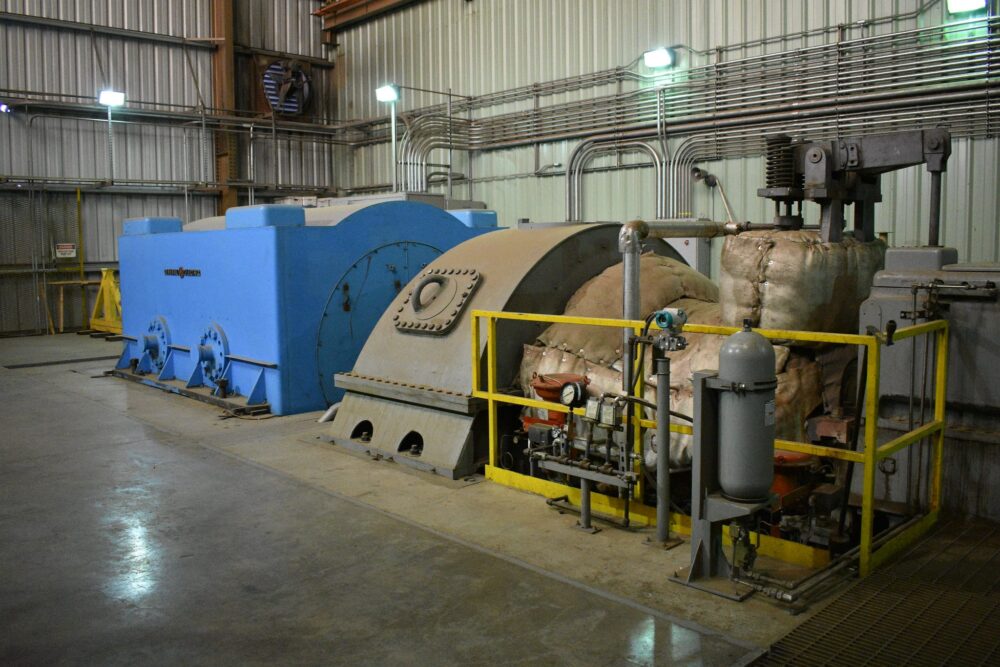Last month, Freres Lumber joined the Puro.EARTH marketplace — an online, international marketplace that helps companies reduce or eliminate their carbon footprints using carbon offsets. These markets are designed to provide an incentive for producers of products or systems that absorb more CO2 than they emit to the atmosphere where it contributes to climate change.
The vehicle used to measure and report the amount of sequestered carbon is called a CO2 Removal Certificate or a CORC. The important elements of a CORC are that they are required to be measurable, verified, long term, and scalable to the industrial level.
We have used biomass cogeneration (heat and power) operations for more than 13 years, and each year produces enough electricity to power approximately 5,000 homes; while also providing thermal energy (heat) for our wood products manufacturing facilities.
The two byproducts of the combustion of biomass in a boiler are typically:
- A non-combustible ash product, which is essentially dirt and sand that can be absorbed by trees during their lifecycle
- Biochar, a charcoal-like product produced when wood is heated to combustion temperature in an oxygen-controlled environment, like our industrial boiler.

Biochar is recognized as an atmospheric carbon reductive material for two very straightforward reasons. The first is the carbon that is stored in the biochar was originally harvested from the atmosphere through the photosynthesis of the tree. The second reason is that the resulting biochar has a half-life of many hundreds and even thousands of years (think of charcoal drawings on a cave wall).
Biochar is interesting not only due to its ability to store carbon, but also its use as a soil amendment and its ability to remove pollutants from stormwater.
Biochar was used thousands of years ago, particularly in South America where Terra Preta de Indio was produced by indigenous populations adding a “mixture of charcoal, bone, broken pottery, compost, and manure to low fertility Amazonian soil.”
Biochar is essentially a carbon matrix and lattice of the plant’s cell walls. The resulting structure has a tremendous surface area, often over 350m2/g. Biochar increases water holding capacity, encourages microbial and fungal life in the soils, binds minerals and nutrients and helps to form soil aggregates.

In short, we are relearning compost and recycling techniques used in 450 BCE, and simultaneously storing carbon! We intend to continue developing applications for our biochar and have contracted with BioLogical Carbon, LLC, in Philomath, Oregon (who have been researching biochar for more than 15 years) to help in the endeavor.
We originally started this rigorous process over many months which began with a lifecycle Assessment performed by Ascent, an environmental consultancy specializing in carbon removal certificates and life cycle analyses. This procedure verified that our biomass cogeneration facility and the resulting biochar complied with the Puro methodology and marketplace rules. It used third-party lab analyses of our biochar product to develop the carbon content of the product, and ultimately the number of CORC’s we produce by volume of material.
All information was then audited by a third-party as required by Puro.EARTH prior to Freres Lumber’s acceptance into the registry. It is important to note that this is a highly condensed version of a process that occurred over many months. Multiple tests were sent to a lab, and many hours were spent by various consultants and firms to substantiate the environmental benefits of this product.
We believe that this supports what we have believed for many years — that wood products manufacturers like ourselves are some of the most environmentally friendly industries in operation today.
From forest management operations reducing the potential for catastrophic wildfires, to the sustainable and recyclable construction products providing homes and structures to our population, to energy produced from wood products which have reached the end of their usable lives, and finally to the byproducts of that energy production. Each produces valuable products while respecting our environment.
Subscribe
We’ll send you a notification when a new story has been posted. It’s the easiest way to stay in the know.